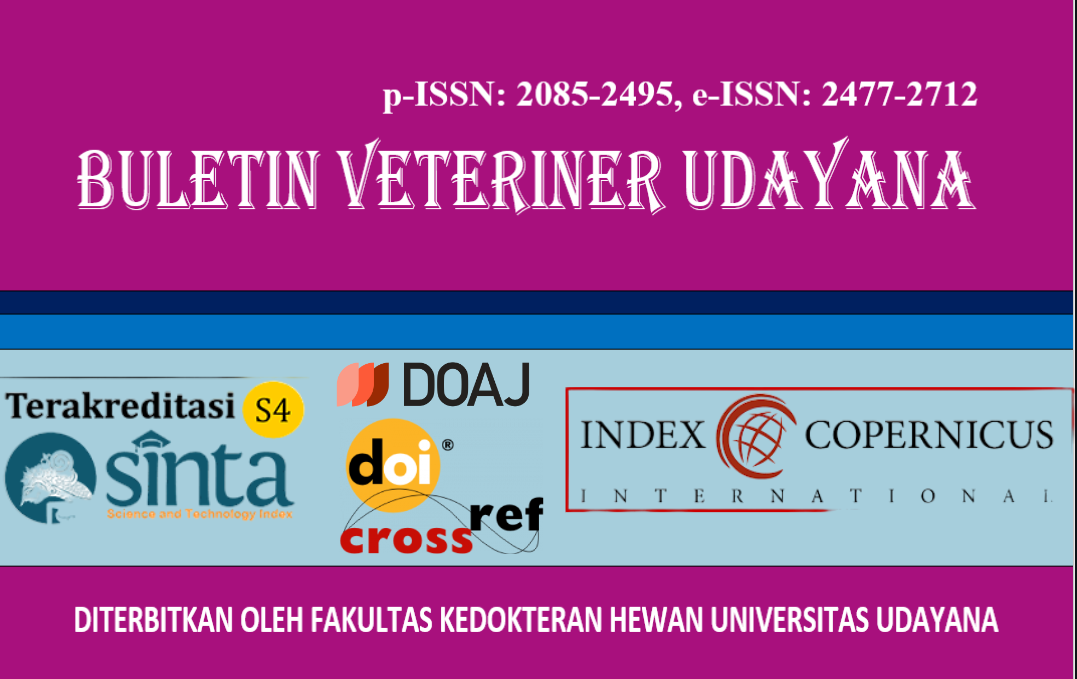TREATMENT OF URINARY VESICLE CALCULI IN A FEMALE POMERANIAN DOG
DOI:
https://doi.org/10.24843/bulvet.2025.v17.i04.p09Keywords:
calculi, laparocystotomy, pomeranian dog, vesica urinariaAbstract
Calculi of the urinary vesica is one of the many problems that can occur in pets, especially dogs. This case study aims to find out how to diagnose and treat a case of urinary vesica calculi in a female dog. A female pomeranian dog named Monna, aged 2.4 years with a body weight of 2.7 kg had complaints of difficulty urinating, straining when urinating, and blood in the urine which lasted for approximately 3 months. Supporting examinations were carried out in the form of an ultrasound examination with the discovery of a hyperechoic mass formation in the vesica urinaria suspected of calculi and radiographic examination found a radiopaque image in the vesica urinaria which was believed to be calculi. Based on the results of the supporting examination, the dog was diagnosed with calculi in the vesica urinaria with a prognosis of fausta. The dog was treated with laparocystotomy surgery using a combination of xylazine and ketamine anesthesia intravenously. The calculi found in the case dog showed characteristics of rough, sharp and jagged edges, irregular round shape, with a hard and strong composition, where the calculi found in this case were calculi formed from calcium oxalate. Postoperatively the dog was given Cefotaxime antibiotics (20 mg/kg BW, q12, IV) for 3 days and continued with Cefixime antibiotics (10 mg/kg BW, q12, PO) for 7 days. On the 10th postoperative day, the surgical wound had dried and fused perfectly. The dog had normal activities, normal defecation and urination.




